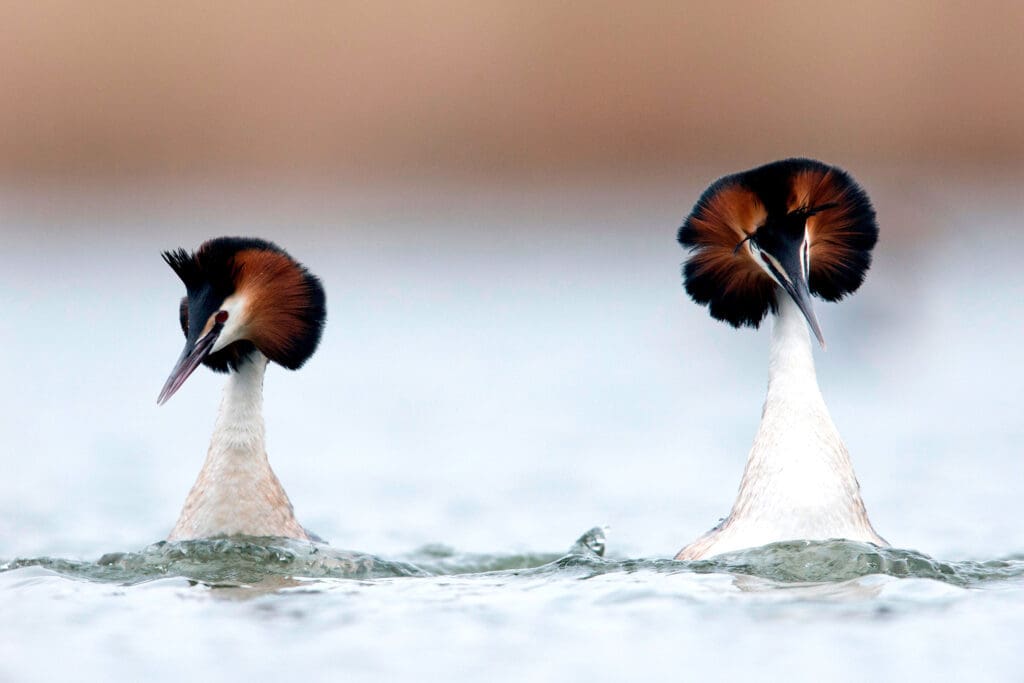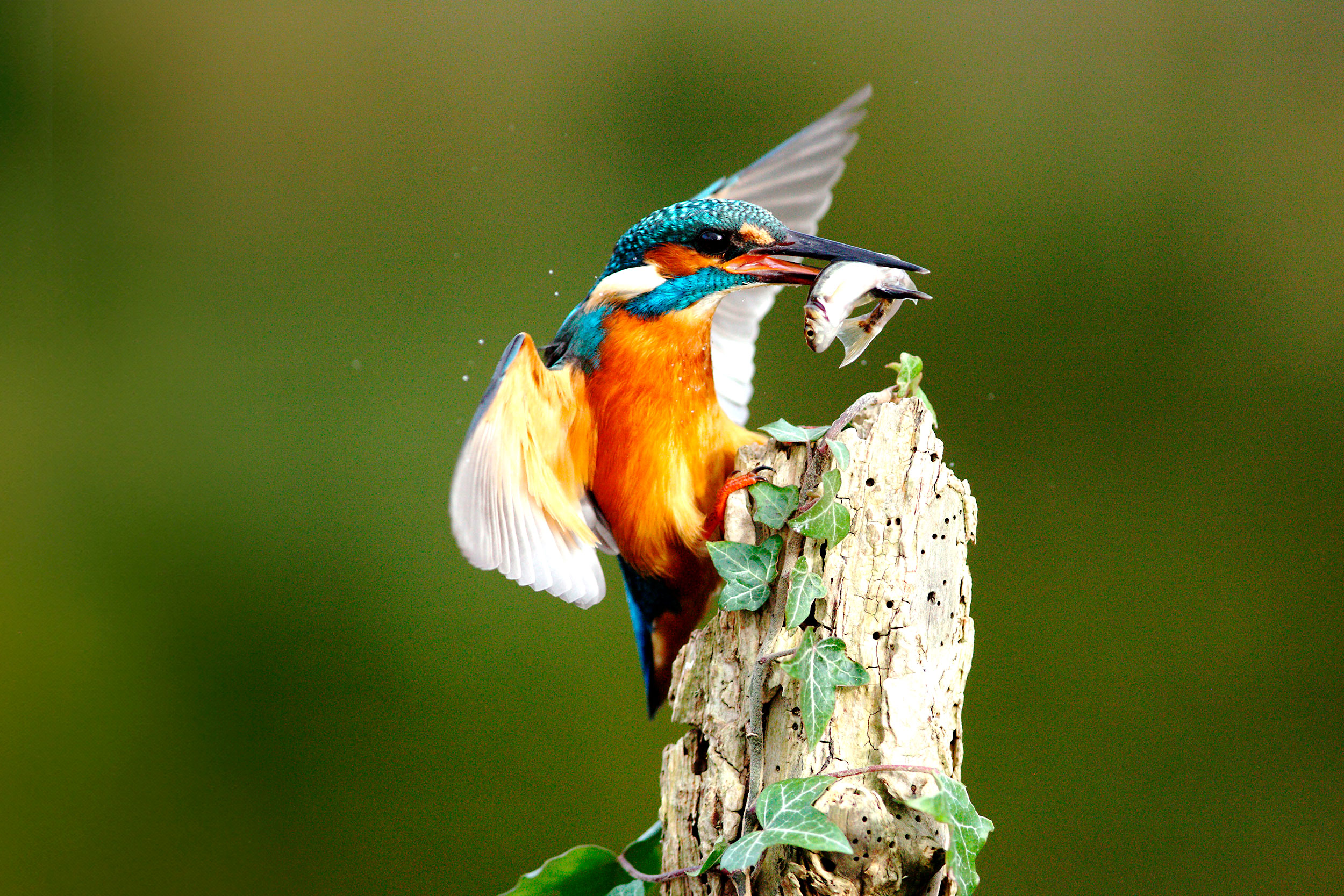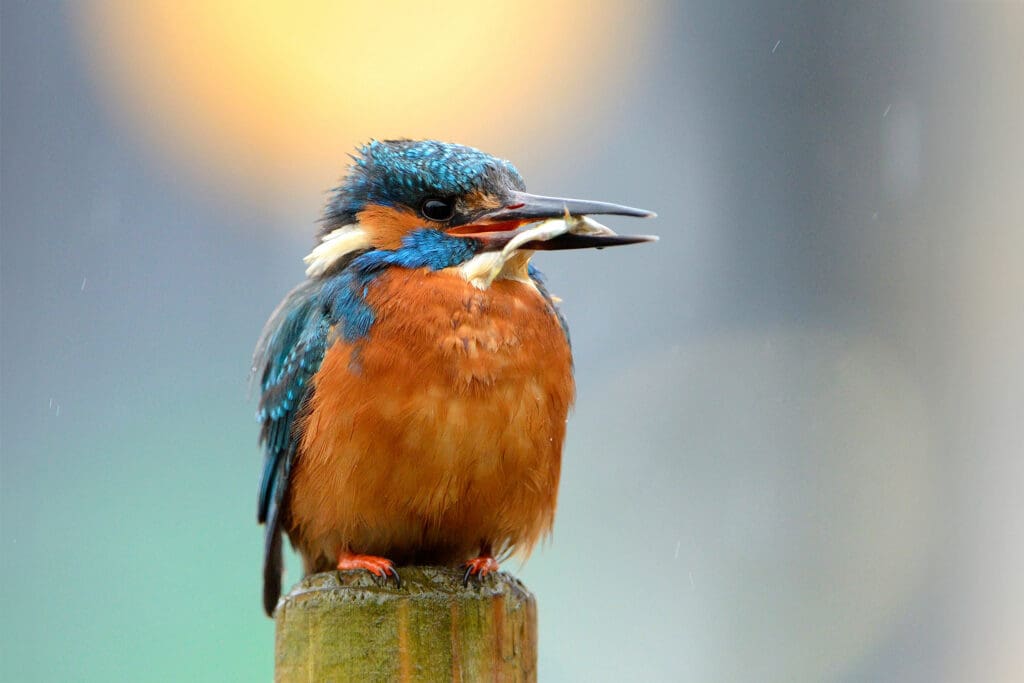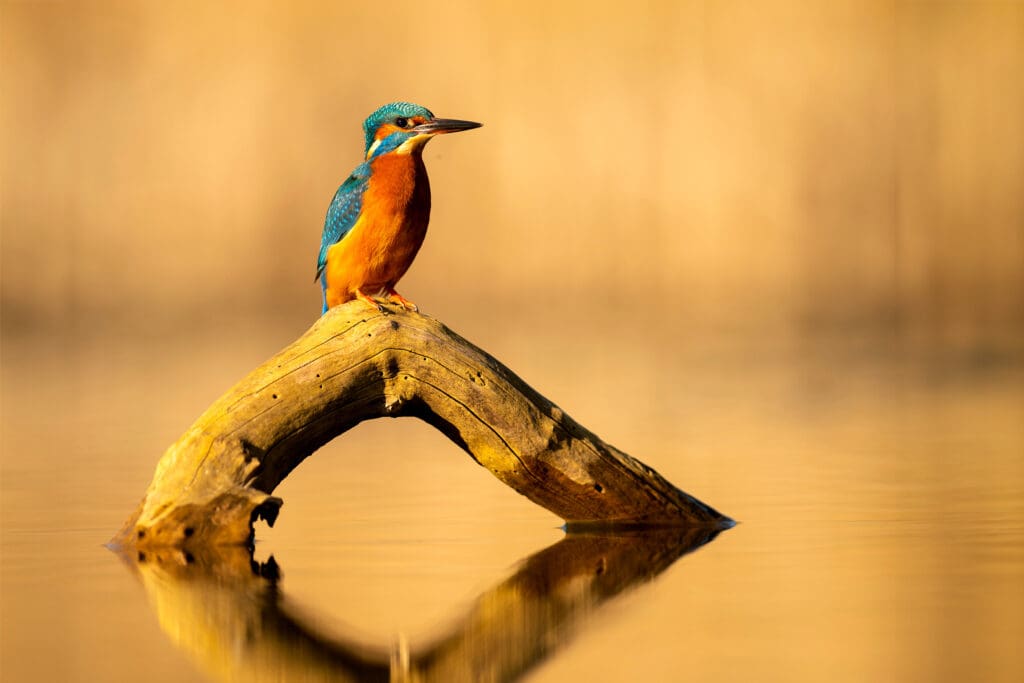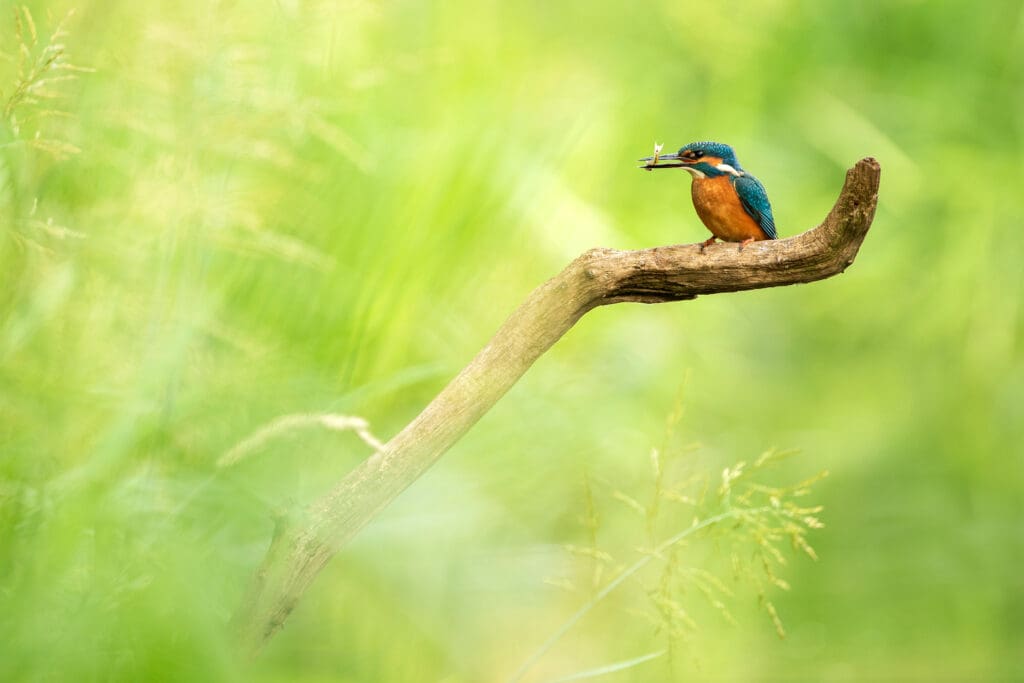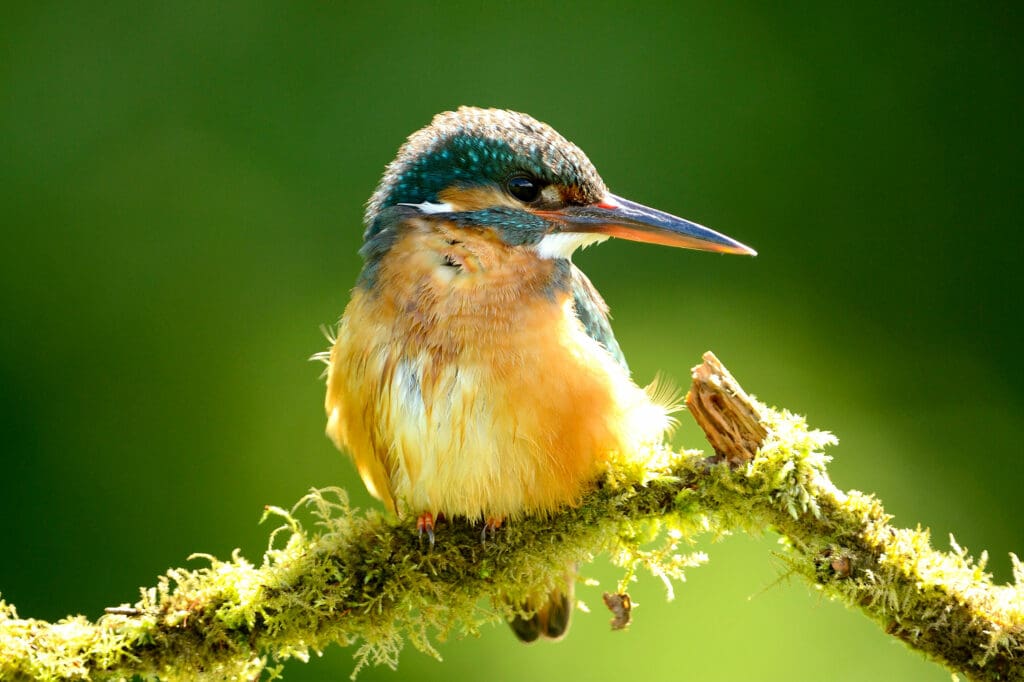Once a fish is caught, the Kingfisher returns to its waterside perch where it will hit the prey against a branch or other hard surface. This kills the fish and ensures spines and fins aren’t sticking out, making it easier to swallow.
A Kingfisher will gulp down a fish headfirst, so the fins and scales won’t jam in their gullet. They regurgitate items they cannot digest.
If you find pellets of fish scales and bones near a river, you may have found a Kingfisher’s preferred perch.
Kingfishers are an indicator of clean waterways and a healthy environment, so it’s a good sign when you see them.
It’s thanks to members like you that we’re able to provide safe wetland homes and vital food sources for Kingfishers on many of our nature reserves.

Protect our Birds, Defend our Nature
You never forget the first time you spot a Kingfisher – those flashes of vibrant blue and orange as it zips along the riverbank. But if you’ve been seeing fewer of them near you, it could be a sign of water pollution – the presence of Kingfishers usually means a healthy environment. Your donation could help us protect Kingfishers and other previous species in our 200 nature reserves around the UK.
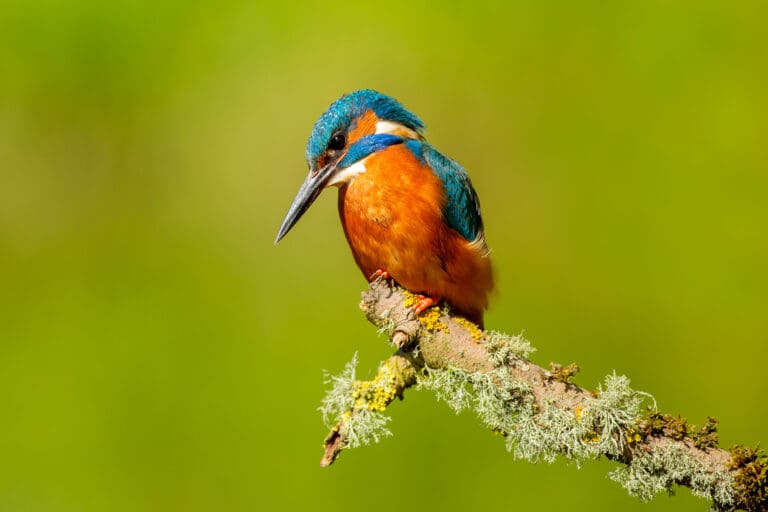
Adult male Kingfisher. Photo: Ben Andrew (rspb-images.com)
You might also like

Rare Black-necked Grebes are thriving

Activities at RSPB nature reserves, autumn/winter 2024
